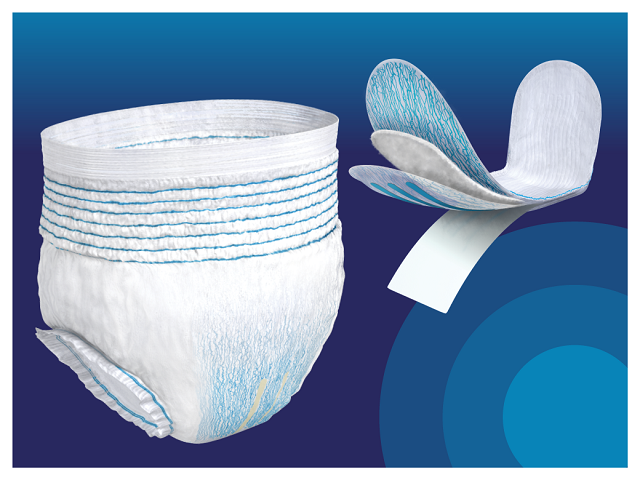Disposable Hygiene Products for Faecal Incontinence in Adults
Faecal incontinence is a condition affecting many adults in hospital, nursing home and long-term care settings. In fact, up to 50% of those in care facilities experience faecal and/or heavy urinary incontinence.1 Contributing factors include age, reduced mobility or paralysis, and other medical conditions.
Many people who experience faecal incontinence also suffer from urinary incontinence. Most disposable hygiene products, however, focus primarily on urine. When urine and feces mix, the risk of skin damage increases because:
Skin has a pH of 5.0-5.9. When it is wet, skin is more susceptible to irritation, friction, and other types of damage. The pH of urine, particularly when mixed with faecal matters, is more alkaline (up to 8.0), which can cause irritation. When faecal enzymes are present, there is also an increased risk of a secondary infection.
Creams can help protect the skin, but they may reduce the skin’s ability to breathe.
Soiled diapers are bulkier, and the pressure from the feces and urine increases the risk for skin damage. Because skin grows less resilient with age, older patients are at higher risk. This means more frequent changes of soiled disposable hygiene articles are required.
There are ways to help protect patients and allow caregivers to change products quickly and easily. Disposable bed pads and/or less-absorbent adult diapers are helpful. These products:
- Reduce the risk of discomfort and injury during changes
- Offer cost savings, as these articles are made with less-absorbent, lower-cost materials
- Help decrease laundry costs for soiled clothes and linens by serving as a barrier
Although most disposable hygiene products target urinary incontinence, scientists and inventors are exploring options that also address faecal incontinence. Prototype designs are in the works to keep urine and feces separate in the diaper. No commonly available diapers have this feature, though hand-made versions are being tested.
Also, similar to wetness indicators that detect urine, sensors that can notify caregivers of the presence of feces are under development. One electronic sensor that is in the prototype phase is designed to send a text message to the caregiver when a diaper is soiled.2 High costs, however, are limiting mass production.
Optimising current designs to better manage faecal incontinence
Although most of the advancements in disposable hygiene products for incontinence have come from the baby diaper market, faecal incontinence in adult care settings brings unique opportunities. It is important to remember that innovative designs to separate urine and feces require the use of the right construction adhesive to bond the diaper and pad components together. And as the size of the user and amount of urine and feces increase, the role of elastic adhesives becomes more crucial for comfort and ease of changing.
If you are considering optimizing your disposable hygiene products to include the management of faecal incontinence, let’s talk. The experts at Bostik can make recommendations for your current product designs, assist in identifying changes that are needed and explain your adhesive options.







